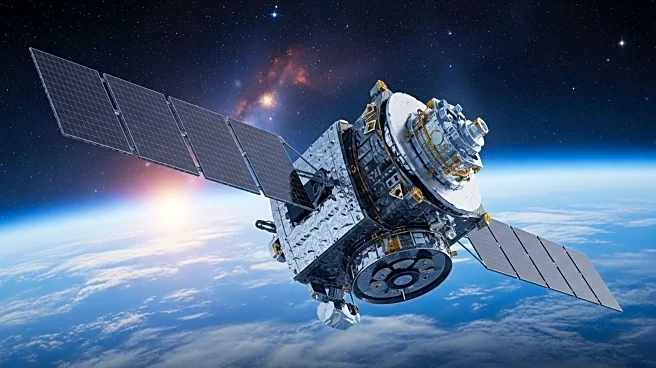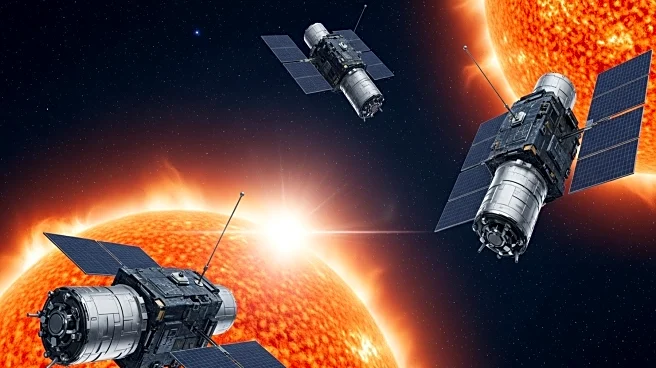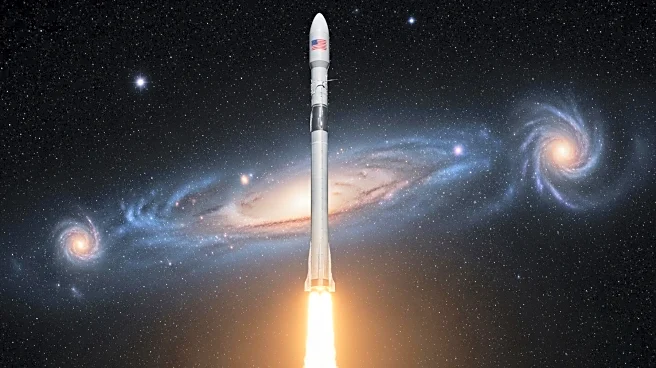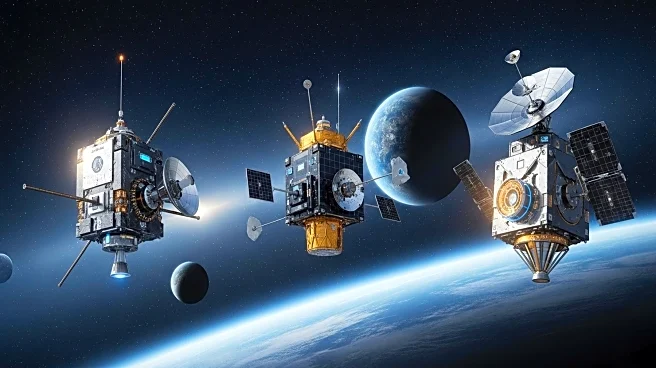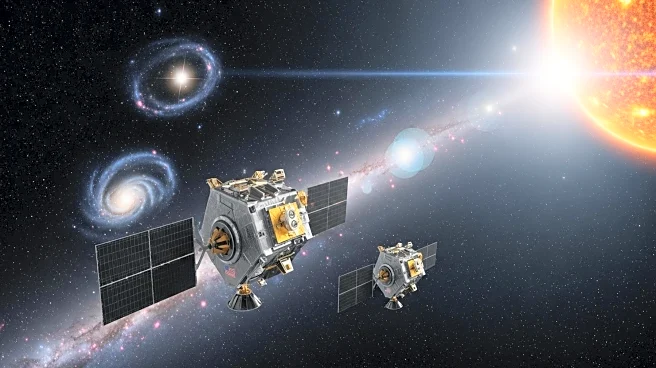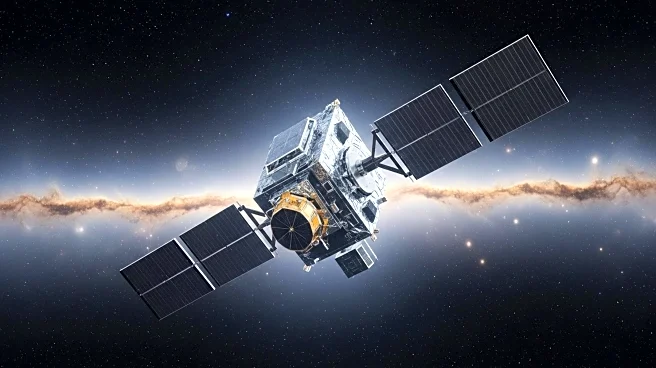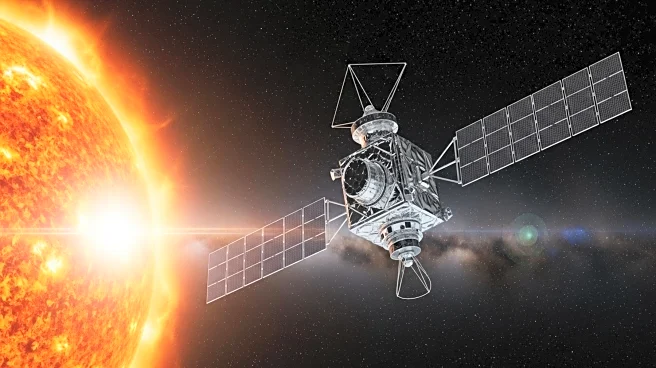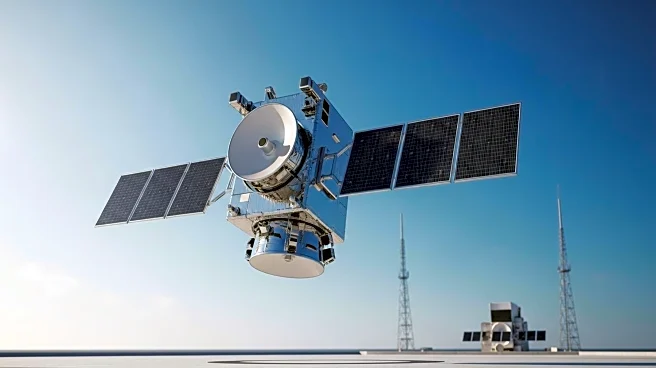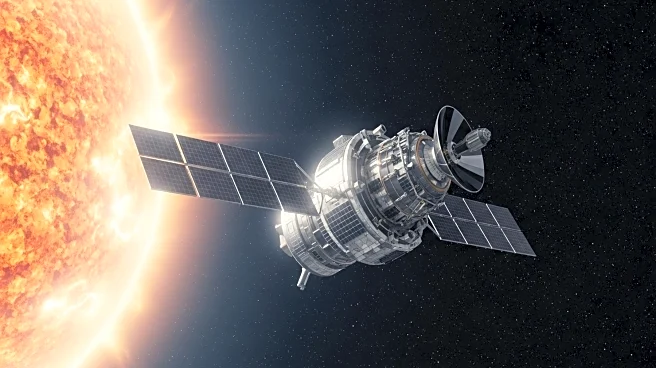What's Happening?
The Interstellar Mapping and Acceleration Probe (IMAP) mission has been launched to explore the heliosphere, the protective bubble formed by the sun's solar wind. Supported by a network of space agencies and universities, IMAP aims to map the interaction between solar wind and interstellar particles, providing insights into cosmic rays and space weather. The mission will operate from Earth's Lagrange 1 point, offering a stable vantage point for continuous observation. Alongside IMAP, the Space Weather Follow-on (SWFO-L1) spacecraft and NASA's Carruthers Geocorona Observatory have also been launched to study solar activity and Earth's exosphere, respectively.
Why It's Important?
The IMAP mission is crucial for understanding the heliosphere's role in protecting the solar system from cosmic radiation. By mapping solar activity and its effects, IMAP will improve space weather forecasting, providing early warnings for satellite operators and astronauts. This mission enhances the safety of space operations and contributes to the protection of technological infrastructure on Earth. The collaboration with SWFO-L1 and the Carruthers Geocorona Observatory will provide comprehensive data on Sun-Earth interactions, benefiting scientific research and operational safety in space.
What's Next?
IMAP and its companion missions will continue to collect and analyze data on the heliosphere and space weather. The findings will be used to refine models of solar activity and improve forecasting capabilities. The collaboration between these missions will enhance our understanding of space weather phenomena and their impact on Earth and space operations. The data collected will also inform future space exploration missions and the development of protective measures for astronauts and satellites.

